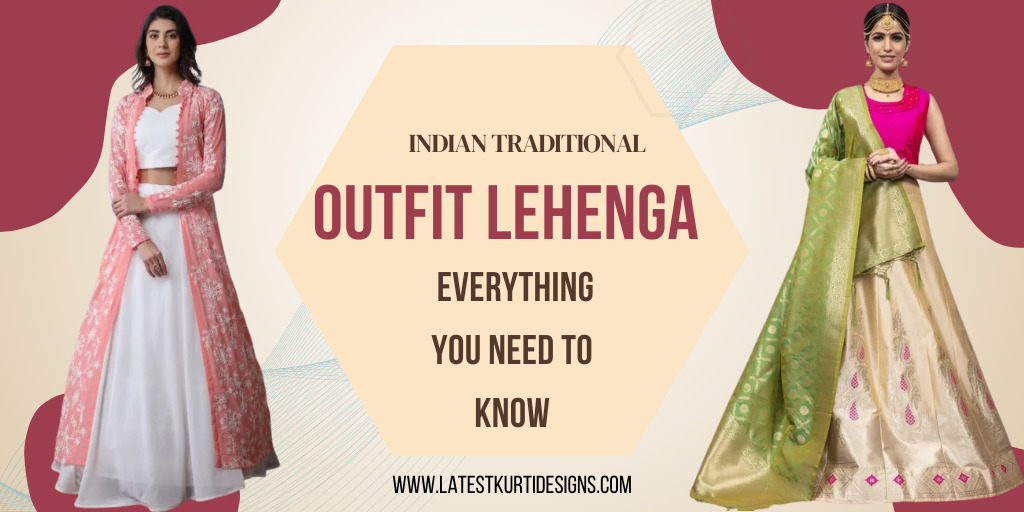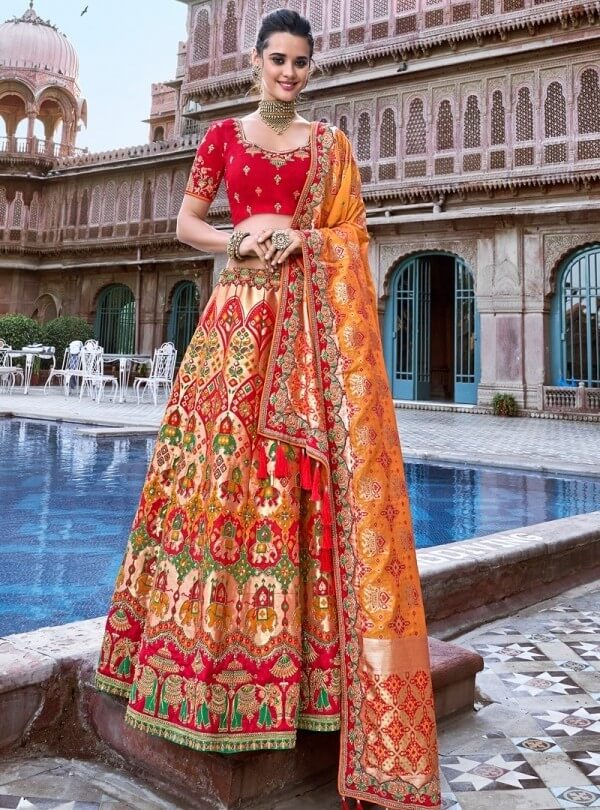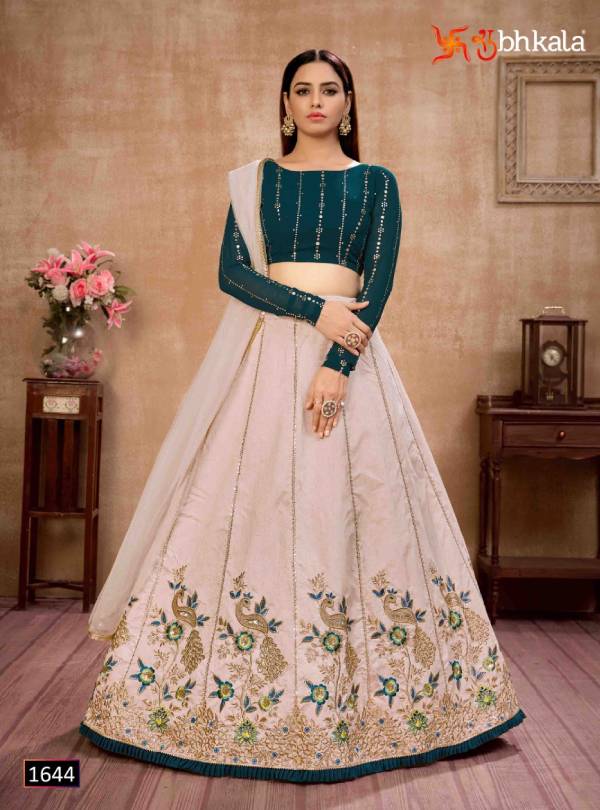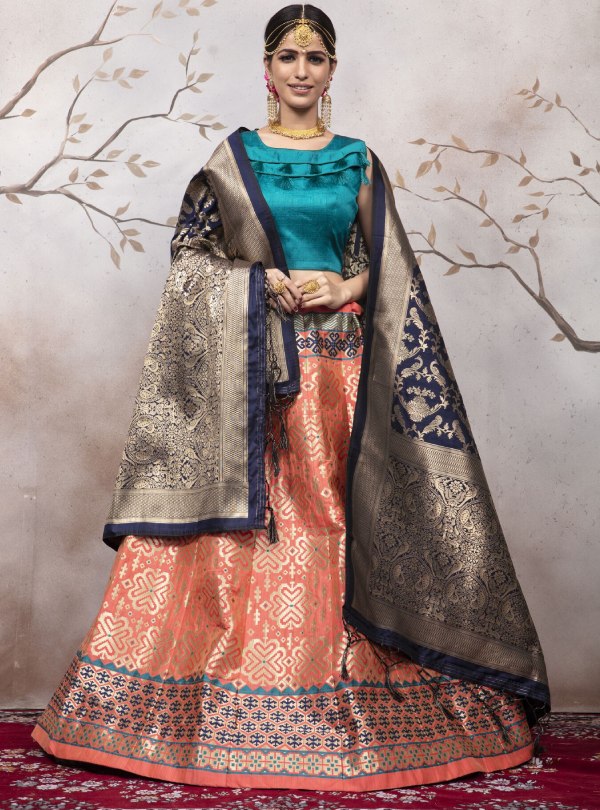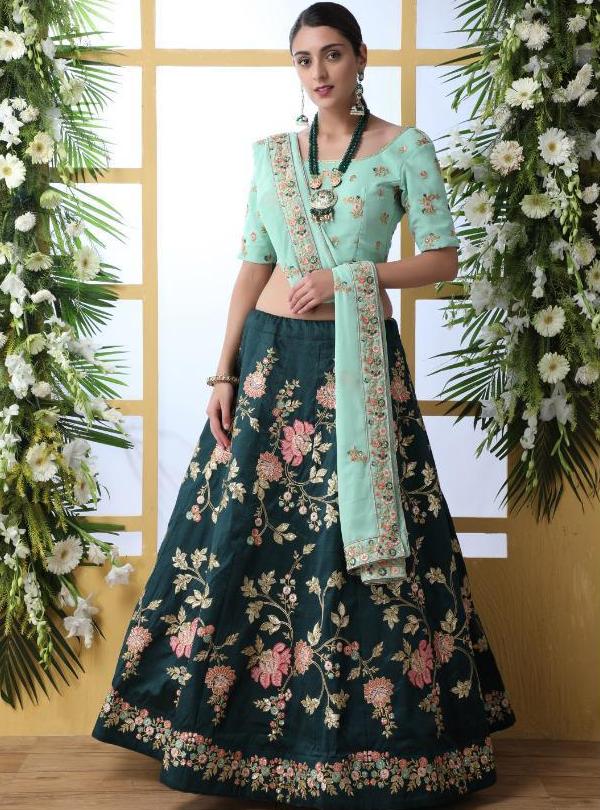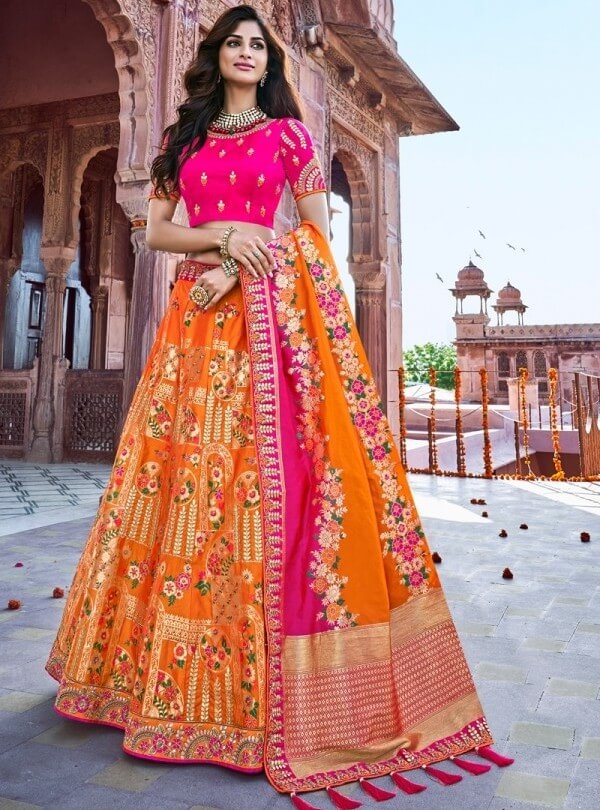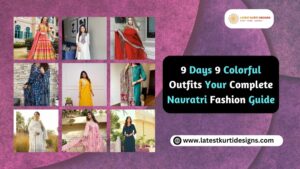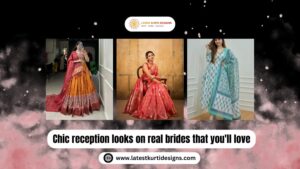The traditional Indian bride can choose from a wide variety of outfits for her wedding. Beautiful clothing such as the saree, Anarkali, and suit are just a few examples. But nothing can beat the glam and charm of Indian Traditional Outfit Lehenga. The lehenga’s versatility is one of the main factors contributing to its widespread popularity.
There is a lehenga design for every bride, whether she is a traditional bride who is remaining loyal to her roots or a modern bride who embodies the modern woman. Lehenga designs exist in a wide variety of sizes, cuts, fits, and styles, which can make them stand out dramatically from clothing that is positioned next to them. Brides-to-be, you’d better believe this will persuade you to say yes while sporting a lovely lehenga.
Indian Traditional Outfit Lehenga are unquestionably the most sought-after clothing for weddings and other celebrations. They are a triumph of design, fabric, and workmanship. This stunning outfit, known as a “Ghagra Choli” in the north and west of India, consists of a long skirt, a choli that exposes the stomach, and a dupatta. The styles of lehengas range from conventional to modern. Traditional and expansive, the circular lehenga is a bridal staple. Bridesmaids adore the figure-hugging Mermaid Lehenga for its fresh appeal.
History Of Indian Traditional Outfit Lehenga
During the 10th century, ladies mostly in North India started wearing lehenga cholis as an outfit. With the arrival of the Mughals in India and their subsequent control from the 12th through the 18th century, the lehenga underwent great workmanship development. The lehenga’s initial, old form was primarily made of cotton; later, royal fabrics and embroideries like silk and brocade were added, further transforming the lehenga into royal clothing.
Depending on the fabric and embellishments, the delicate sewing of a lehenga choli dupatta set or a ghagra choli takes at least twenty days. Indian Traditional Outfit Lehenga that are hand-stitched and hand-woven take longer to complete because of the attention to detail. Communities that specialise in designing lehengas may have specific jobs assigned to them as part of the overall production process.
Varieties Of Lehengas
Lehengas continue to change over time as cultural influences shape their silhouette or fashion, giving rise to the various lehengas that are still worn today. When it comes to traditional fashion, the lehenga comes in several different iterations, including the Sharara, Gharara, and Lacha.
Lower clothing such as the Sharara, Lacha, and Gharara, which date back to the 18th and 19th centuries, resembles flared pants. Lehengas made up of a blouse, long skirt, and dupatta, and they are most frequently worn at weddings. The skirt below the Sharara extends out, whereas the Sharara has a joint below or at the level of the knee. The Kurti and one or more dupattas are worn with the sharara. One dupatta is typically worn as a veil when two are worn, and the other is typically slung over the shoulders. Usually, people wear it to weddings.
When To Wear Indian Traditional Outfit Lehenga
The majority of occasions where Indian Traditional Outfit Lehenga are worn include weddings, parties, and celebrations. However, one can pair it with ethnic jewellery like Kundan, polka, meenakari, etc. depending on how detailed the lehenga is.
Thanks to the variety of fabric possibilities, lehengas can be worn all year long regardless of the weather. Wintertime is the greatest time to wear lehengas made of materials like brocade, velvet, satin, and silk. In the summer, lighter textiles like silk, georgette, and crepe can be worn.
Innovations In Lehengas
Additionally, the lehenga has absorbed and fused with contemporary inspirations and world trends. One of the newest Indian ethnic creations that combines the saree and lehenga silhouettes into one is the lehenga style saree. The lower half is made up of a ready-made sari with pleats, drapes, and a fall that resemble the flared portrait of a lehenga. The waist can be adjusted by zipping or tying a knot. To imitate the pallu of a saree, the upper part of the garment must be tucked and wrapped once.
The anarkali lehenga is yet another modern variation on the traditional garment. Lehenga cholis come in a variety of fittings and shapes, including A-line, Straight, Umbrella, Fish, and Mermaid. However, the lehenga has undergone significant fabric experimentation recently, compared to prior eras when it was sewn using basic materials like cotton or silk. Today, lehengas are made from a variety of fabrics, including satin, cotton blends, velvet, crepe, and georgette.
Also Check This, Designer Lehenga Choli For Haldi Ceremony

